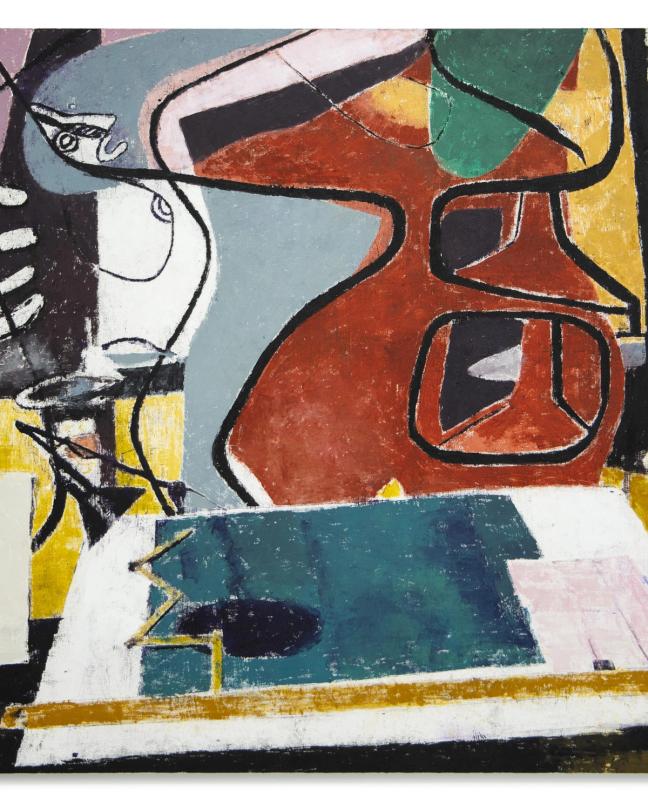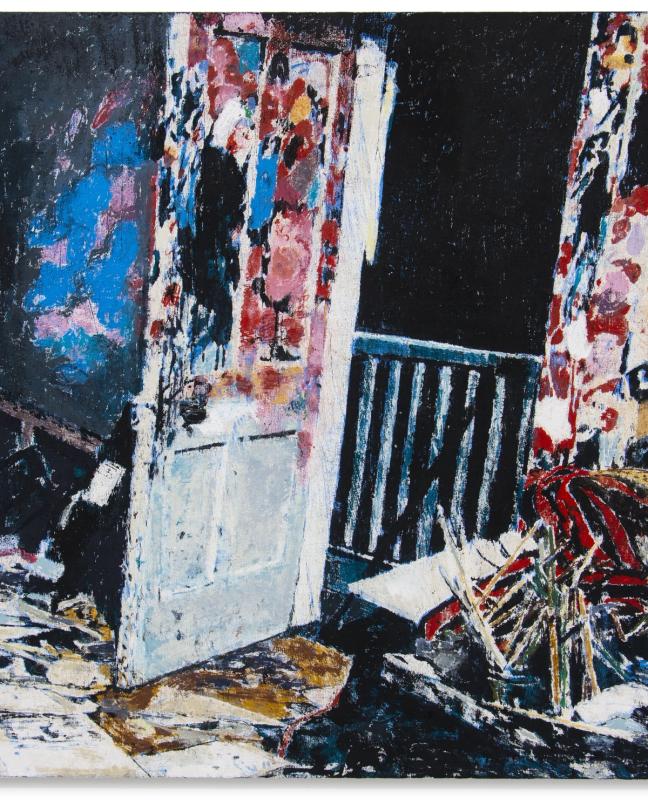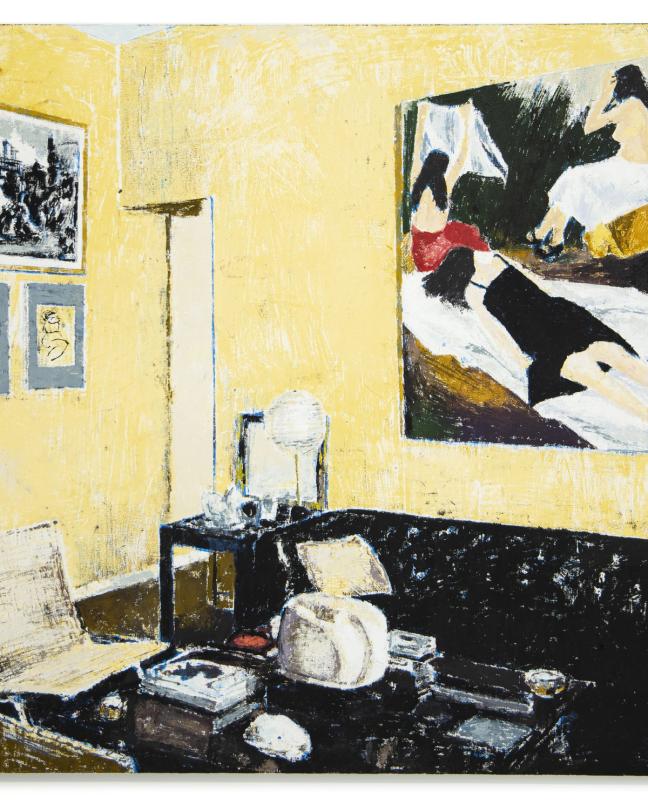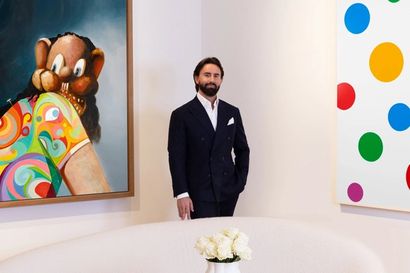Upon turning 50 last year, the Puerto Rican-American artist Enoc Perez found himself experiencing something of a mid-life crisis. “I’m told it’s common,” he says. “I felt restless despite my previous achievements and I needed to do something. I thought of getting a nasty tattoo, or a beautiful car, but nothing seemed to get me out of my state. In the end — and as usual — the solution was to be found in my work.”
Creative block, it seems, leaves no-one alone. Not even those like Perez, who over a decades-long career has garnered a worldwide reputation for his paintings and oil stick drawings of iconic utopian architecture, including those of American embassies around the world, and post-war American landmarks. His subjects of choice, put simply, had long been the exteriors of the buildings which beguiled him most, but he felt that the time had come for a change. Ultimately, in the midst of this creative rut, it was the advice of a friend which provided the artist with the seed of inspiration for his upcoming exhibition at Ben Brown Fine Arts, The Cinematic Self, by suggesting that Perez should begin to look at interiors.

Photography by Frederick Egan Castleberry, courtesy of the artist & Ben Brown Fine Arts
“At the time I didn’t think it was a good idea,” confesses the artist. “But I began to realise that I could name at least 20 amazing homes and apartments off the top of my head which appeared like ready-made (or ready-to-be-made) paintings.” Perez began approaching the project as an exercise by which he gained an insight into the intimate spaces of the people he most admired, and discovered their unique definitions of ‘home’.
“I always loved portraiture,” he explains. “When I was a young painter I would paint the women that I met at bars, and my studies of buildings are very much works of portraiture to me, too. The interior of someone’s home is another form of portraiture, and the best part is that in order to make these works convincing and successful, I had to return to painting the way I did as a young artist.” It felt, he says, like discovering a “fountain of youth”.

Detail of Via Fondazza 36, Bologna, Home and Studio of Giorgio Morandi

Villa Nellcote, Rolling Stones in Residence

Le Corbusier’s drafting Table, 1953
The fruits of his labour will be unveiled in The Cinematic Self, Perez’s first major UK exhibition in over ten years. This interiors painting series delves into the fascinating private spaces of creatives, eccentrics and collectors including David Bowie, Le Corbusier, and Elvis Presley. The collection provides invaluable insights into the worlds of some of our best-loved creators — from the paint smeared door of Francis Bacon’s studio, to the jostling cosmetic bottles filling Andy Warhol’s bathroom cabinet, to the decadent mirrored interiors of the Villa Nellcôte where the Rolling Stones recorded Exile on Main St.
Does he have a particular favourite amongst the host of homes he became intimately acquainted with? “The spaces are all beautiful in their own right, like people are,” he tells me, but confesses he felt closer to four in particular — namely, the Turin apartment of Carlo Mollino, the NYC home of Diana Vreeland, the Paris flat of Serge Gainsbourg and David Bowie’s sleeper car.

Reece Mews Kensington, London, Studio of Francis Bacon

810 Fifth Avenue, New York, Apartment of Nelson Rockefeller
Despite marking a departure from his studies on architectural structures, the search for a kind of utopia that has been apparent in all of Perez’s work to date can still be found in the pieces which make up The Cinematic Self. “This is something that is at my very core as an artist,” he explains. “The drive to follow a vision which, at times, can be crystal clear and at other times blurry — but always acted on regardless.
“It is important to believe that things are possible and to trust yourself to bring that vision to life, believing that it is all going to come together in a way that others can feel it, too.” The key, he says, is to have enough faith in the project to follow it through — this way you can catch a glimpse of what he describes as “the truth, fulfilment, peace, paradise. For me, art is the religion.”

David Bowie’s Sleeping Car, Siberia, 1973

Palazzo Mengarini, via Ventiquattro Maggio, Residence of Gianni and Marella Agnelli
If all this sounds a little lofty, you might be pleasantly surprised to hear that Perez is refreshingly unpretentious when it comes to the modern mediums of self-expression. Asked whether he feels concerned by the effect social media might be having on our artistic attention spans, he tells me, “Social media is fine, I like Instagram. It gives artists a chance to create their own narrative and reach a larger audience. It seems to be that there are all types of people using Instagram, some are serious and take their time to look, some perhaps slightly less so. Even if our attention spans are shortening, I think that’s ok — it’s my job to keep you looking.”
The Cinematic Self by Enoc Perez runs at Ben Brown Fine Arts from 2 October – 22 November 2019.
Looking for more artistic interviews? We spoke with TalkArt hosts Russell Tovey and Ron Diament…

Become a Gentleman’s Journal Member?
Like the Gentleman’s Journal? Why not join the Clubhouse, a special kind of private club where members receive offers and experiences from hand-picked, premium brands. You will also receive invites to exclusive events, the quarterly print magazine delivered directly to your door and your own membership card.


